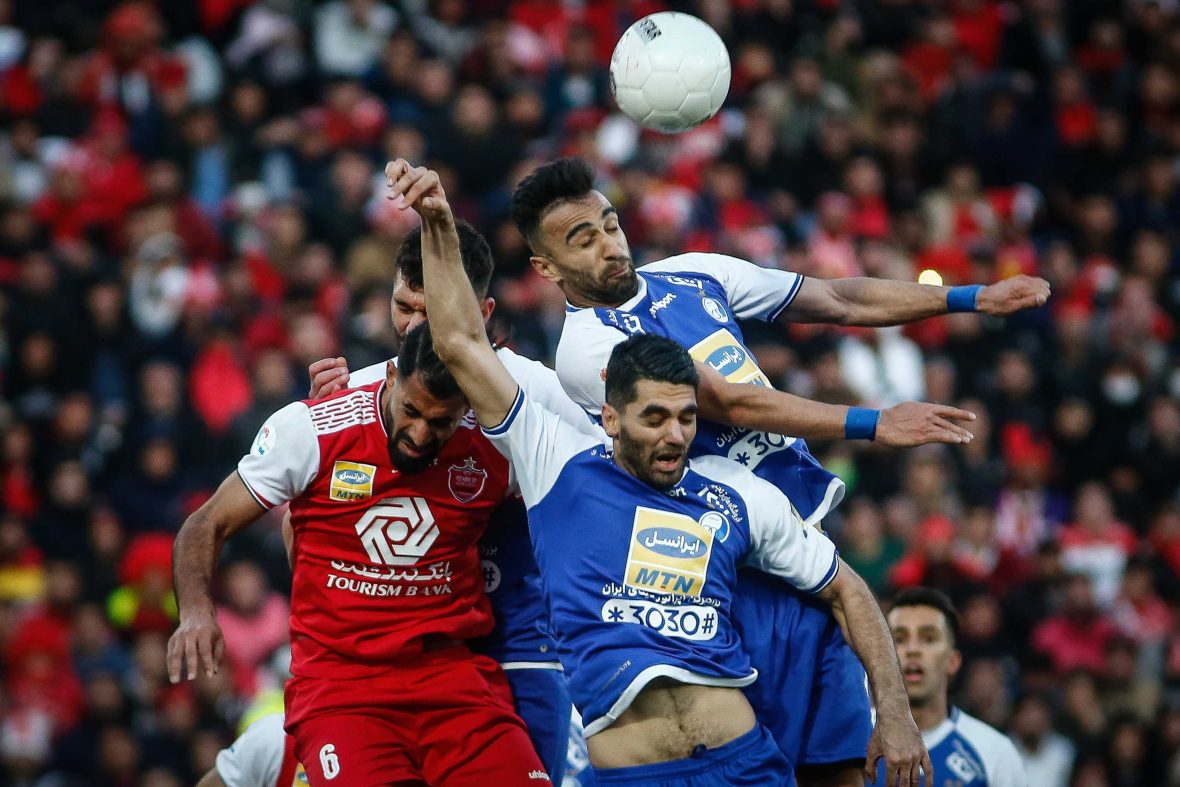
On any given non-holy day, the millions living in Iran may seem to gasp in its honeyed atmosphere, but the Tehran Derby tells a completely different story, one in which Tehran’s most famed football clubs, Persepolis FC and Esteghlal FC, vie for victory in the Persian Gulf Pro League.
For many, Derby Day is effectively a holy day, though you might not hear vocal agreements if you said so out loud. Still, the scene around the city supports that idea. The Grand Bazaar quickly shuts down their carpet and spice stores, students abandon the coffee shops, and Tehran Fried Chicken overflows with young men on their way to the Metro. Teens try to dab blue or red paint on tens of thousands of passing faces entering the Azadi stadium.
The stadium, home to both teams, houses what Iran calls the most important match. Half the stands are marked in blue, the other half in red, perfectly symbolising the intense rivalry between both sides. Fans of the Premier League might liken it to the rivalry between Manchester’s United and City, or between Glasgow’s Celtic and Rangers.
In the annals of their rivalry, victories for either team have always come from teams working hard to overcome their evenly-matched opponent. Persepolis has taken the victory 26 times whilst Esteghlal has won 27 times; the remaining matches, including the most recent on 13 March, have ended in draws, which meant legit European bookmakers for UK players paid out to quite a few lucky bettors who predicted that outcome.
The Most Recent Tehran Derby Broke Gender Barriers
As the sun set over the Iranian capital, this year’s first derby was interesting for quite a few reasons, but perhaps the most standout of them involved breaking gender barriers. For the first time in Iran, a woman joined the refereeing team for the men’s match, though she did not join on the field. Instead, 34-year-old Mahsa Ghorbani observed footage as a video assistant to ensure live game scores were accurate.
The Tehran Derby is beloved by football fans throughout Asia and beyond, but a stark reality still hides beneath the glamour. The two clubs aim to uplift Iran’s spirits and serve as economic beacons, but the clerical establishment has long been opposed to women being allowed in stadiums alongside male fans, and a very limited number of them have been able to attend games in recent years.
Unfortunately, minimal progress has been made since FIFA received calls to ban Iran from the Qatar World Cup based on female fan exclusion in football matches, which came in the wake of 22-year-old Mahsa Amini’s death in police custody for “improperly” wearing her headscarf.
Nevertheless, Ghorbani’s inclusion signals hope for the end of the completely shut-off world of men’s football. Last year, 3,000 Iranian women won a decades-long fight to attend their first derby, an outcome that FIFA praised.
One of the country’s top sports journalists also welcomed the decision, commending Iranian women for taking charge of their rights in spite of the strong patriarchal nature of football. He also thought that one could eventually become the main referee in a match.
Political Overlap In The Tehran Derby
The Islamic Republic’s two famous clubs have also left their mark in the country’s politics. Esteghlal in particular, whose name is Persian for “independence,” is considered to be the club of the elite in power as it was founded by an influential officer under the crown of Tehran in 1945. Until the Islamic Revolution in 1979, the club was associated with the dynasty in power at the time. Now compare that to Persepolis, the club founded in 1967 by a boxing champion, which aims to be the club for the people.
Of course, in practice, the clubs have fans from all over the political spectrum, and both persisted through the Islamic Revolution, whose instigators felt football was merely a tool of the elite meant to distract political critics.
But this is the source of the intense rivalry between fans, along with the consequences that follow immense pressure. So often, the game comes down to a single play or the roll of a die rather than the true quality of their respective players’ performances; given that, it’s unlikely we will again see such a lopsided event as the 1973 Derby in which Persepolis dominated Esteghlal with a 6-0 result.